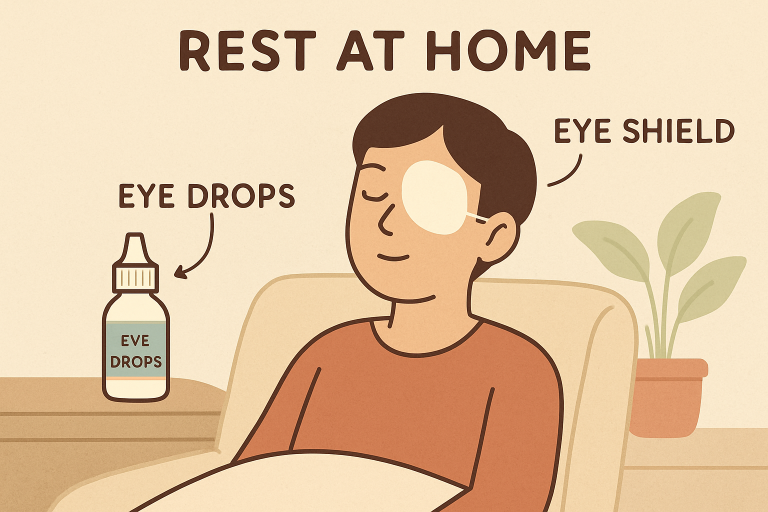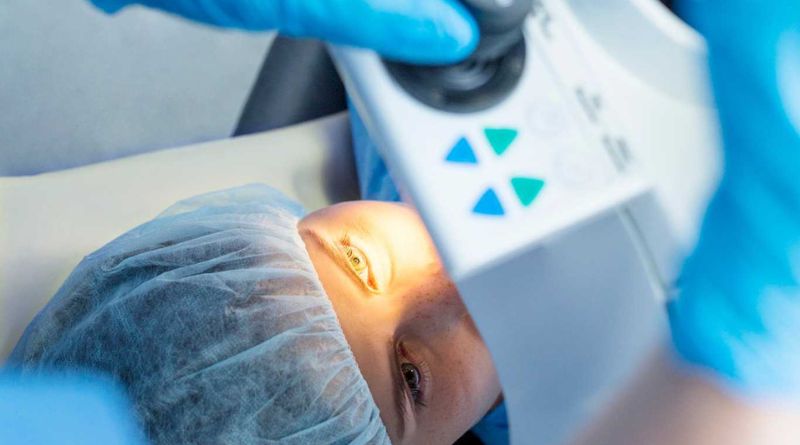Table of Contents
Key Takeaways
- Recovery timelines can differ based on the procedure (e.g., LASIK, PRK, SMILE).
- Strict attention to post-operative care guidelines is vital to ensure proper healing.
- Ongoing follow-up visits catch potential issues early and support optimal visual results.
Choosing to undergo vision correction surgery can be an exciting step toward long-lasting visual freedom. Still, it’s just as important to fully understand the journey that begins after leaving the surgical suite. Achieving great outcomes not only relies on the procedure itself, but also on a supportive, well-informed recovery. Before you decide if this route is right for you, knowing exactly what recovery is like helps set expectations and reduce anxiety. To learn more about your vision correction options, you can visit Tersigni Vision for further details. Most people are pleasantly surprised by how quickly they recover and how soon their vision improves. However, following your surgeon’s recommendations closely is crucial for healing, protecting your eyesight, and minimizing the risk of complications.
Immediate Post-Surgery Period
Right after vision correction surgery, it’s normal to experience mild irritation, burning, tearing, or blurry vision. These symptoms often resolve within the first few hours, particularly for LASIK and SMILE. Most patients should plan for someone to drive them home. Depending on the procedure, your vision may noticeably improve within 24 hours, but rest is essential on the first day. Light sensitivity, a gritty sensation, and watery eyes are common initially and are typically manageable with prescribed lubricating drops and over-the-counter pain relief. If you’re seeking a detailed step-by-step guide, resources like the American Academy of Ophthalmology explain typical early symptoms and expectations. Patients should avoid screens, bright lights, and touching their eyes during this initial period. Although discomfort is transient, adhering closely to post-op instructions can minimize complications and promote healing.

First Week: Initial Healing Phase
Your eyes are particularly vulnerable during the first week after surgery. Your surgeon will likely recommend a regimen of antibiotic and steroid eye drops, which are essential for preventing infection and minimizing inflammation. Strict hygiene is crucial: don’t rub your eyes, and keep them safe from soap and water during facial washing. Most people return to office work and other light activities within two to three days, though high-intensity exercise, swimming, or heavy lifting should be avoided for at least a week. Your vision will likely fluctuate in clarity during this stage. Protective eyewear at night may be suggested to prevent unintentional eye rubbing while sleeping. Eyedrop schedules are important, and missing doses can increase the risk of complications.
Weeks 2 to 4: Stabilization Phase
As healing continues through the second to fourth week, most patients notice vision improving each day, though minor variations are common—especially in different lighting conditions. Some dryness, halos, and sensitivity to light may persist, but these symptoms usually decrease steadily. By the end of this period, many people resume more regular routines. However, your eye care professional may still advise against high-impact sports or direct exposure to water sources like pools and lakes. It’s critical to attend all scheduled follow-up visits. Your surgeon may detect subtle issues before you notice them, ensuring any emerging problems are addressed early. This phase is also the time to report any new symptoms, such as worsening pain or changes in vision, to your provider. For recovery support, Healthline offers insights into extended post-surgery care and symptom management.
Months 1 to 3: Achieving Optimal Vision
For most procedures, it can take several months before vision fully stabilizes and all post-operative symptoms disappear. You’ll likely be able to enjoy a full range of daily activities, including exercise, outdoor recreation, and, in many cases, contact sports. There may be occasional dryness or minor fluctuations in vision, but these typically resolve by the three-month mark. Even as symptoms subside, regular vision checks remain critical to confirm the cornea is healing properly and that no residual refractive error persists.
Common Post-Surgery Symptoms
- Dry Eyes: The sensation of dryness can last several weeks to months, particularly after LASIK. As your doctor recommends, lubricating drops can help manage this side effect.
- Light Sensitivity: Wearing sunglasses outside can greatly reduce discomfort from bright sunlight or glare.
- Halos or Glare: Visual disturbances such as halos, starbursts, or glare, especially at night, usually fade as the cornea heals and the eye adjusts.
Tips for a Smooth Recovery
- Follow Post-Operative Instructions: Adhering to medication, activity restrictions, and other guidelines significantly speeds healing and reduces risk.
- Protect Your Eyes: Use protective eyewear at night and in environments where foreign particles are present.
- Maintain Hygiene: Wash your hands before administering drops and avoid makeup around the eyes until cleared by your surgeon.
- Attend Follow-Up Appointments. Regular check-ins ensure your healing remains on track and allow your doctor to intervene swiftly if needed.
When to Contact Your Surgeon
Mild discomfort is to be expected, but contact your provider immediately if you notice severe or persistent pain, significant vision loss, or symptoms of infection like increasing redness, swelling, or discharge. Timely medical attention is crucial for addressing potentially serious complications.
Final Thoughts
Vision correction surgery can be a transformative step toward greater freedom and clarity, but its success doesn’t stop at the operating room. Careful adherence to recovery guidelines, open communication with your surgeon, and patience during the healing process all play essential roles in achieving the best possible results. With realistic expectations and proper aftercare, most patients find the journey well worth it—leading to sharper vision, renewed confidence, and a lasting improvement in quality of life.

